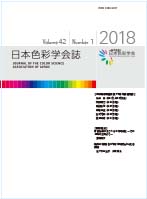Ungen-coloring is a coloring technique introduced from China to our country in the 7th century. It is mainly used for something Buddhist, and expresses "vivid colorfulness" and "three-dimensional effects". In Ungen-coloring, there are some differences between China and Japan in spite of being the same painting material and same drawing method. Chinese Ungen-coloring represented by Mogao Caves in Dunhuang is "three-dimensional effects". On the other hand it emphasizes "vivid colorfulness" in Japan. As a result, it is thought that Japanese Ungen-coloring is two-dimensional and then decorative.
In this paper, I investigated the reason why the coloring technique, which was originally a coloring technique representing three-dimensional effects, became two-dimensional and later decorative in Japan. Until the Nara period, it was coloring with three-dimensional effects, but gradually changed into Japan's own original Ungen-coloring. There is the influence of two-dimensional painting (Buddhist picture) at that time, and the time of the change is thought to be related to the introduction of esoteric Buddhism into Japan.
In the 8th century, the Ungen-coloring which had three three-dimensional effects became two-dimensional in the 10th century after the transition period of the 9th century. And in the 11th century Byodoin phoenix hall, it seems that the influence of the aestheticism of the Heian aristocracy has shifted to the Ungen-coloring that emphasizes decorativeness. It is the Byodoin phoenix hall that is showing the "vivid colorfulness" more than anywhere in Japanese Ungen-coloring.
View full abstract
